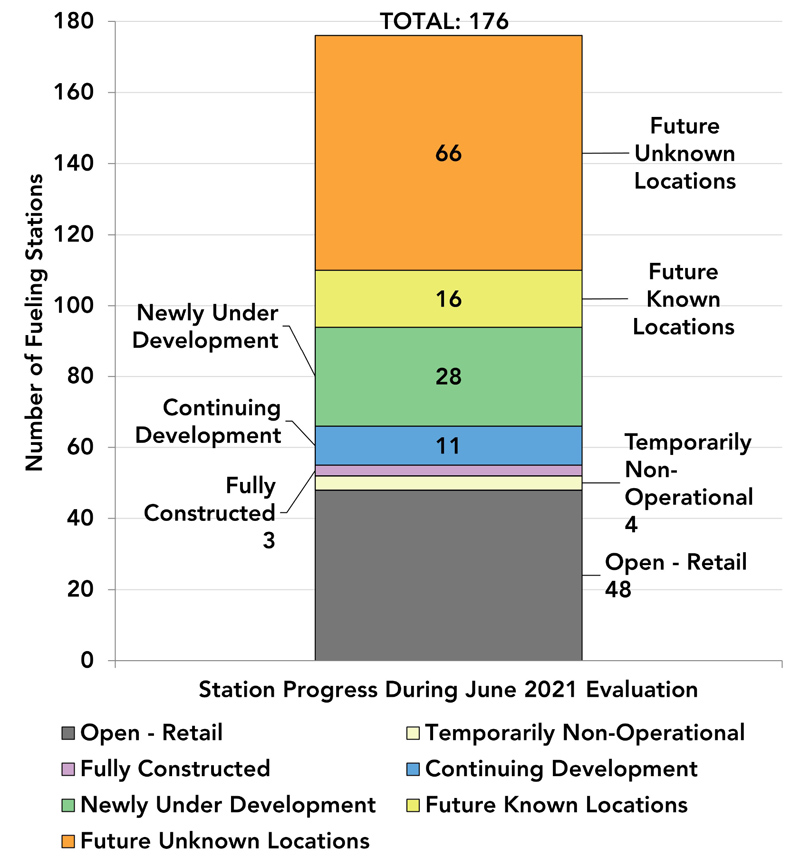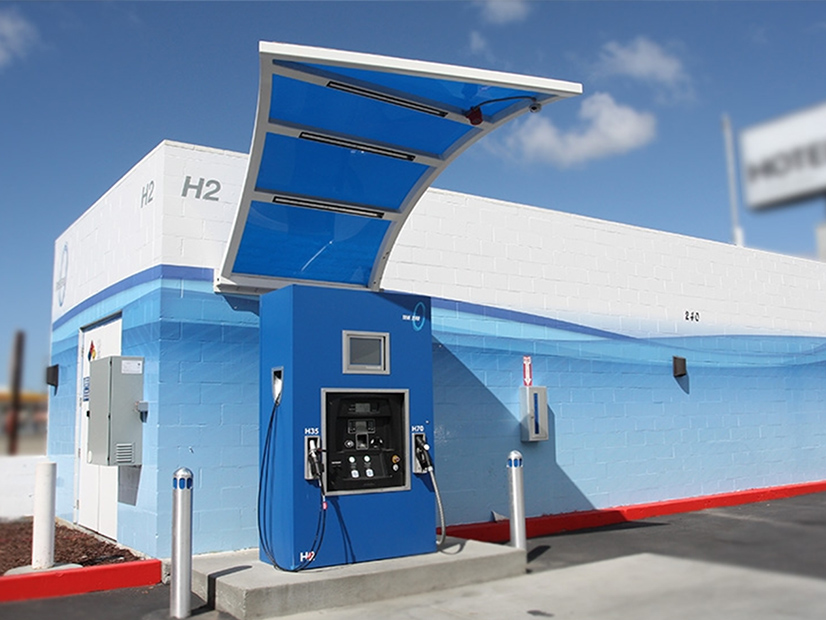Development of hydrogen-fueling stations in California is accelerating, and car manufacturers should consider ramping up production of fuel-cell electric vehicles (FCEV), according to a new report.
As of late June, California had 48 hydrogen-fueling retail stations open to the public, compared to 42 stations at mid-year 2020, according to the report released Friday by the California Air Resources Board (CARB). Another four stations are closed but expected to reopen, although an exact reopening date isn’t known.
The six-station increase detailed in the new report was an improvement from 2020, when the number of open stations increased by only one.
And CARB expects growth in the number of hydrogen-fueling stations to surge, as station developers take advantage of state grants and private investment increases.
The report notes that a new station that opened in Placentia in May was the first in California without any state grant funding. However, station operator FirstElement is taking advantage of CARB’s hydrogen refueling infrastructure (HRI) credit that is part of the agency’s low-carbon fuel standard.
The HRI provision allows station operators to receive extra LCFS credits based on the difference between station capacity and fuel sales. Sixty-one stations, including some still under development, are participating in the program.
According to CARB, station developers may be building more stations or larger stations, or even reducing fuel prices at the pump, as a result of the HRI program.
200-Station Target
Assembly Bill 8 from 2013 set a target of 100 hydrogen-fueling stations in the state. AB 8 directed the California Energy Commission to fund the development of retail hydrogen-fueling stations until the goal is met. The program is authorized through Jan. 1, 2024.

In December, the CEC approved a $116 million plan for hydrogen-fueling infrastructure. (See Hydrogen for FCEVs Gets Big Boost in California.)
CEC grants are projected to add up to 94 new stations to California’s hydrogen fueling network, while private funding could add another 23 stations, according to CARB.
Based on all known investments, CARB expects the number of hydrogen-fueling stations to grow to 176 by 2026. The state is projected to meet the 100-station goal in 2023.
California had 7,993 fuel-cell electric vehicles on the road as of April 1, a number projected to grow to 61,100 in 2027. But the expected number of hydrogen-fueling stations in 2027 could accommodate 250,000 FCEVs, according to CARB.
“The current and planned station network provides auto makers an opportunity to deploy as many as four times the FCEVs currently indicated through industry surveys,” CARB said in its report.
FCEV Barriers
The report noted that availability of fuel isn’t the only barrier to FCEV adoption. Other factors include high FCEV prices, high fuel prices, limited model availability and lack of customer awareness.
Another issue is the unreliability of existing stations, CARB said. Stations might shut down temporarily due to supply-chain disruptions or equipment break-downs.
CARB said the situation should get better by early 2022 as hydrogen production and delivery improve.
“Still, station reliability is a concern that will require near-term and long-term solutions to minimize negative experiences for today’s drivers and ensure this does not become a barrier to further FCEV adoption,” CARB said in its report.
Expanding the Network
With the number of hydrogen-fueling stations expected to grow quickly, CARB said station developers should take a closer look at areas outside of the currently planned network. Hydrogen-fueling stations are concentrated in the Los Angeles area, Orange County, San Diego County, Sacramento region, and the San Francisco Bay Area.
Areas worth a closer look for station development include Palm Springs, San Luis Obispo, Monterey, Santa Cruz, and San Joaquin Valley cities such as Bakersfield, Fresno and Stockton. CARB said Northern California cities such as Chico and Eureka, where there’s not yet any hydrogen-fueling infrastructure, might also be good sites for future stations.
“Some [areas] may present opportunities for development immediately after the stations currently under construction are completed,” CARB said. “Others may be more appropriate in later phases of development, but all should be considered seriously.”




